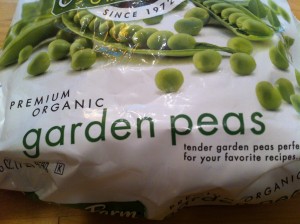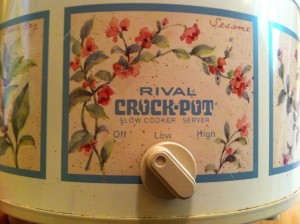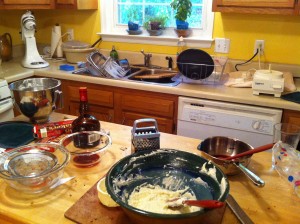
Last time I visited my parents we stumbled upon an episode of The Middle playing on the Hallmark Channel. It’s Thanksgiving and the extended family is gathered at the grandparents’ house. Throughout the day the women of the family gather at the kitchen table to talk. It’s a no kid zone and they revel in their time together apart from the rest of the family.
Sue Heck, the beautifully awkward, contagiously enthusiastic, overwhelmingly geeky teenager walks in to the kitchen where the women are and ceremoniously announces with a toothy braces-filled smile that this Thanksgiving she will finally be sitting with the women because she got her period.
I’ve seen the episode before and I could read her lips. That’s how I know that she says the word “period.” Otherwise I wouldn’t – because the Hallmark Channel bleeped the word “period.”
I was aghast. Not only is this piece of information central to that main storyline in the episode, but this show normally airs on broadcast TV at 8pm. If it doesn’t need bleeping then, why did Hallmark apply a stricter standard?
We hardly ever watch Hallmark because we don’t get the channel at our house but I can see from their tagline when I Google it that they are about “Family, Holidays, Original Movies & Series.” Just as I suspected: “family.” How, exactly, do you celebrate family values without acknowledging the way families are created? How do you prioritize and focus on family while treating the fact of women’s menstruation as a dirty little secret?
The bleeping in this episode is particularly ironic, given that the other main story line is the teenage son, Axel – along with his dad and his granddad – trying to pick up a teenage convenience store clerk with their pick-up lines. To recap: Girls experiencing menstruation as a rite of passage, taboo; boys and grown men hounding a teenage girl at work, full of family values!
The Middle is a great comedy that often has something worthwhile to add to conversations about class in our country. So I’m not picking on the show, which was, after all, setting up the antics of the grown men trying to “help” Axel with pick-up lines as the unsettling, ridiculous attempts they were. I am pointing out the tone-deafness of the Hallmark Channel.
There is nothing “un-family” or inappropriate about a young girl announcing, “I got my period.” The language is as neutral as possible without using the technical, medical-sounding “menstruation.” Is the concern about having to explain the facts of life to young children before parents are ready for that conversation? If so, the bleeping seems misguided. “Period” is not even a word that would make a young child’s ears perk up upon hearing it. “Period” is used all the time, in a variety of contexts. Bleeping it calls more attention to it.
This started as a minor post about a network’s stupid decision to bleep a natural, everyday part of life in the supposed interest of “family.” But in a week where a young woman is still missing from the university community where I minister, in a week where beloved Hermione Granger actress Emma Watson is viciously threatened for expressing her feminist beliefs at the UN, and in a week where NPR is reporting on Gamergate, it’s obviously not just about Sue Heck’s period.
We are clearly still having trouble acknowledging the humanity and dignity of every person, regardless of gender, sexuality, religion, opinions, and a host of other things. I could let Hallmark off the hook – it’s not the biggest fish to fry. But it all adds up. Bleeping “period” is the small, seemingly insignificant seed that grows into some mighty ugly, poisonous plants.
No one needs a bleep to protect them from a period. Let it be right there in the midst of the family’s kitchen conversation where it belongs.






